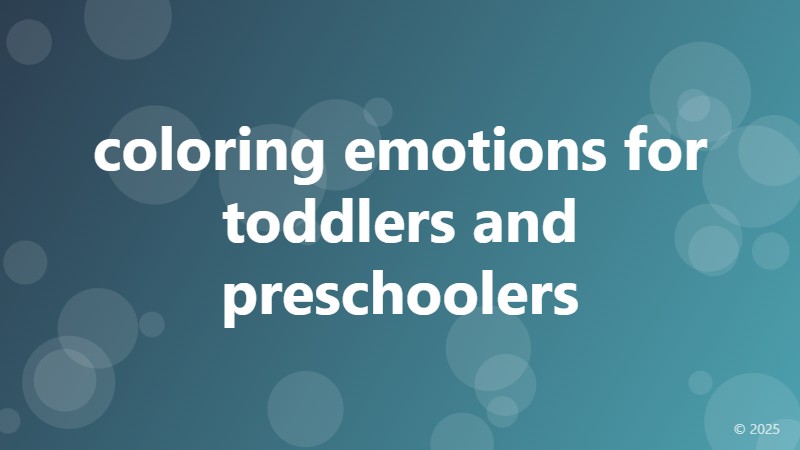coloring emotions for toddlers and preschoolers

Unlocking Emotional Intelligence: The Power of Coloring Emotions for Toddlers and Preschoolers
As early childhood educators and parents, we strive to provide our little ones with a solid foundation for future success. One crucial aspect of their development is emotional intelligence – the ability to recognize, understand, and manage their emotions. A simple yet powerful tool for fostering emotional intelligence in toddlers and preschoolers is coloring emotions.
What are Coloring Emotions?
Coloring emotions is an innovative approach that combines art, self-expression, and emotional awareness. It involves using different colors to represent various emotions, allowing children to visually identify and process their feelings. This creative outlet helps toddlers and preschoolers develop a deeper understanding of their emotional landscape, making it easier for them to articulate and regulate their emotions.
Benefits of Coloring Emotions for Toddlers and Preschoolers
Integrating coloring emotions into your daily routine can have a profound impact on your child's emotional well-being and social skills. Some of the benefits include:
- Enhanced Emotional Awareness: By recognizing and labeling their emotions, children develop a better understanding of their feelings and become more empathetic towards others.
- Improved Emotional Regulation: Coloring emotions helps toddlers and preschoolers identify and manage their emotions, reducing tantrums and meltdowns.
- Developed Self-Awareness: This activity encourages children to explore their thoughts, feelings, and behaviors, fostering a stronger sense of self.
- Boosted Creativity and Self-Expression: Coloring emotions provides an outlet for children to express themselves creatively, building confidence and self-esteem.
How to Implement Coloring Emotions in Your Daily Routine
Incorporating coloring emotions into your daily routine is easy and fun! Here are some simple steps to get you started:
- Prepare a Color Palette: Gather a variety of colored markers, crayons, or paints and create a color palette with labels for different emotions (e.g., red for anger, blue for sadness, yellow for happiness).
- Encourage Expression: Ask your child to identify how they're feeling and choose a corresponding color. Encourage them to express their emotions through coloring, drawing, or painting.
- Open Conversation: Engage in open conversations with your child about their emotions, validating their feelings and offering support when needed.
- Make it a Habit: Incorporate coloring emotions into your daily routine, such as during circle time, before bedtime, or during transitions.
Conclusion
Coloring emotions is a powerful tool for fostering emotional intelligence in toddlers and preschoolers. By incorporating this simple yet effective activity into your daily routine, you can help your child develop essential life skills, including emotional awareness, self-regulation, and creativity. So, get creative, grab some crayons, and start coloring emotions with your little ones today!